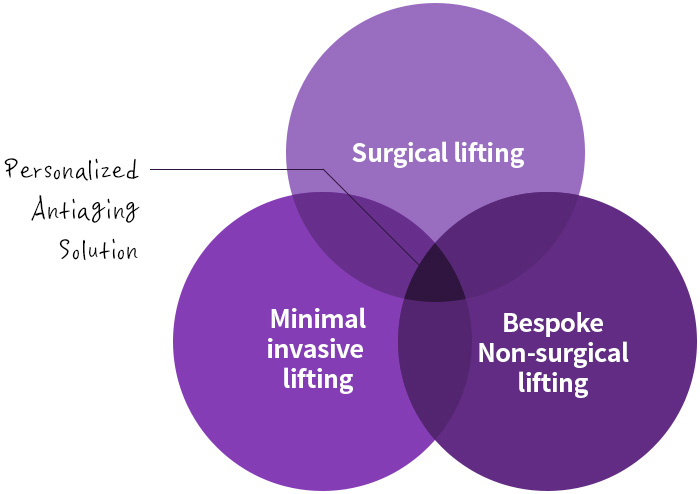
- MACS LIFT
- HERSHE
- Since 1992, HERSHE has continuously strive to research for your youth & beauty

-
Minimal Incision,
Powerful Lifting -
HER
SHE
-
HERSHE Signature MACS Lift
A globally performed facelift surgery method, MACS Lift targets significant aging signs in the mid to lower face, such as nasolabial folds and sagging jawlines, semi-permanently.
MACS Lift effectively lifts sagging facial tissue down to the SMAS layer, addressing the root cause of facial sagging. Compared to traditional facelift surgery, MACS Lift reduces the length of the incision and focuses on the mid and lower face, where most significant aging signs occur.
* MACS Lift : Minimal Access Cranial Suspension Lift -
- Surgery Time
Around 2 hours - Pain Level
Low - Recovery Period
7-10 days after Surgery - Anesthetic Method
Sedation - Duration
Almost Permanent
May vary by individual
The actual procedure and outcome of the surgery may vary depending on the individual. Side effects such as hematoma, edema, and infection may occur. - Surgery Time
- Who Is The Ideal Candidate For MACS Lift?
-
MACS Lift surgery is suitable for those who have a sagging lower face (cheek, jawline, etc.) and want a semi-permanent effect of looking younger.
Aging signs do not always correspond with age, but usually, the skin on the mid-lower face, such as cheeks and jawline, starts to sag as it loses elasticity after the 30s.
If the main cause is the sagging of the SMAS layer that supports the facial muscles, minimally invasive or non-surgical lifting will have limited effects. In this case, MACS lifting will be the appropriate solution, as the MACS lift is a more direct surgical approach that lifts the deep SMAS layer to improve the aging signs in the face with minimal incision.
-
 Thread Lift: 20s~Minimal invasive lifting
Thread Lift: 20s~Minimal invasive lifting
procedure that effectively
repositions sagging skin of mild
degree to restore a youthful
appearance. -
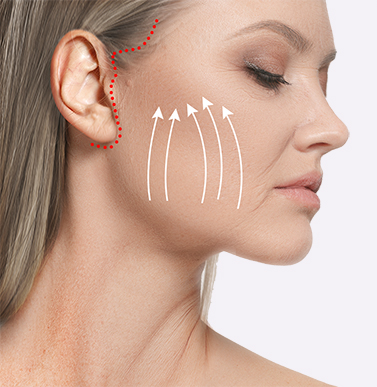 MACS Lift: 40s~60sSurgical lift with minimal
MACS Lift: 40s~60sSurgical lift with minimal
incision focused on restoring
aging signs primarily in the
mid-lower face, minimizing
the surgery scar and
downtime. -
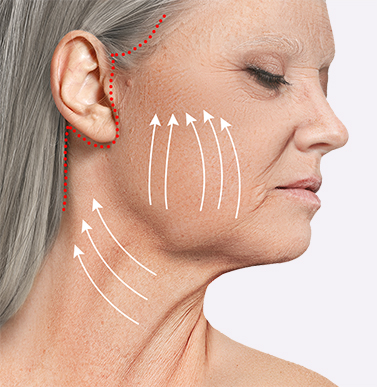 Full Face Lift: 60s~An extensive facelift surgery
Full Face Lift: 60s~An extensive facelift surgery
performed when sagging and
wrinkles are present across
the entire face and neck in
medium to severe degrees.
-

-
- Restoring the SMAS layer is key to reversing aging
-
As aging progresses, collagen production, which supports the skin and subcutaneous fat layer, decreases, causing the skin and fat tissue to sag.
Additionally, the SMAS layer, located deep within the skin, begins to stretch and droop, causing the skin layers above it to sag as well.
Eventually, this leads to skin sagging, wrinkles, volume loss, and facial distortion. Thus, a superficial skin lift will have limited effect and will not be sustainable when symptoms are actively progressing. It is important to address and lift the individual layers of sagging skin down to the SMAS layer to effectively improve overall signs of aging.
-
WHY
HERSHE -
Layer-by-layer MACS Lift
Facial Volume Repositioning
Double Lift, Double Locking Method
 Layer-by-layer MACS Lift
Layer-by-layer MACS Lift
-
If the sagging SMAS layer is simply pulled up in the same state, less lifting force is transferred to the surrounding sagging tissue.
The HERSHE signature MACS lift is performed with the “Ssamzie technique” that pulls and gathers the surrounding tissue along with the SMAS layer.
When the SMAS layer is precisely lifted, it causes the skin layers above the SMAS layer to be lifted accordingly, resulting in a natural outcome and effective lifting after the MACS lift surgery.
While this method effectively pulls and lifts the SMAS and surrounding layers vertically, it also lessens the chance of facial nerve damage. - How HERSHE Performs MACS Lift
-
 Design the surgery meticulously to ensure the incision line will be smooth after suturing.
Design the surgery meticulously to ensure the incision line will be smooth after suturing. -
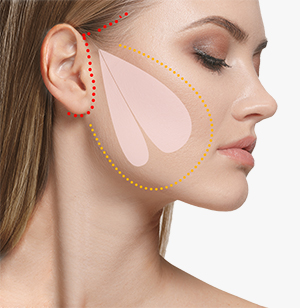 Detachment of the sagging skin layers, one layer at a time, down to the SMAS layer.
Detachment of the sagging skin layers, one layer at a time, down to the SMAS layer. -
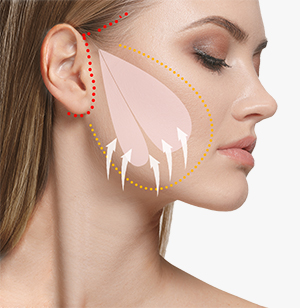 Lift the sagging skin, including the SMAS layer, using the 'Ssamzie technique,' causing the upper skin layers to be lifted.
Lift the sagging skin, including the SMAS layer, using the 'Ssamzie technique,' causing the upper skin layers to be lifted. -
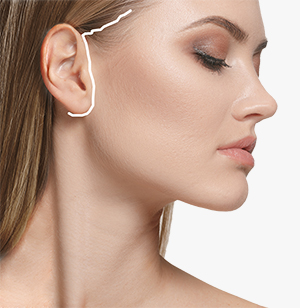 Resect the accumulated sagging skin at the incision line, then apply the double suture method to suture both inside and outside.
Resect the accumulated sagging skin at the incision line, then apply the double suture method to suture both inside and outside.
 Facial Volume Repositioning
Facial Volume Repositioning
-
HERSHE MACS Lift also addresses volume deficiency from a three-dimensional perspective in the surgical design.
The surgical design of the MACS Lift mainly targets lifting the overall mid-lower face. However, facial deformities due to volume loss in the cheekbone area are also considered simultaneously and can be improved by volume repositioning during the facelift surgery.
Though the result is not as direct as a fat graft, the outcome of the volume repositioning is expected to be very natural while the main concerns regarding significant aging signs, such as nasolabial folds and sagging jawlines, are addressed.

Front Profile

45 Degree Angle

Side Profile
 Double Lift, Double Locking Method
Double Lift, Double Locking Method
-
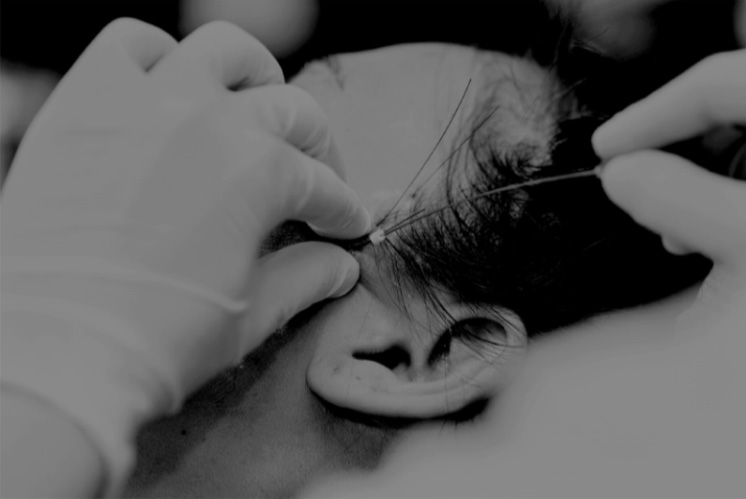
-
- A step to secure the layer and ensure that lifting results is well seated
- After the comprehensive surgical lifting procedure of the SMAS layer and the other sagging skin layers above is complete, additional fixation with Epiticon® can be combined to provide extra support as an additional step to secure the repositioned skin tissue in the desired lifted position. This double lift–double fixation technique allows for a firm lifting effect, as Epiticon® provides additional physical support securely anchored inside the soft tissue, leading to an expected natural and improved outcome of the surgery.
-
Epiticon®, used in the HERSHE Signature MACS Lift,
is the latest generation PDO lifting thread with newly introduced multi-lifting unit properties. This unique characteristic of Epiticon® allows the lifted and repositioned tissue after the MACS lift to be secured at the desired location, utilizing its tightening capability to fixate the target tissue in place. -

- Thesis Announcement in a World-Renowned International Journal
- On the Subject of Thread Lifting Using Polydioxanone (PDO) Threads

- 2022.05
- International Congress of Minimally Invasive Surgery
- Lecture Session on the Release of Springer Textbook
- 2022.03
- JETEMA Webinar
- Presentation on the Subject: Buttock Lift


- 2021.05
- Dermatologic Surgery
- Thesis Announcement on the Subject: Gluteal Soft Tissue Repositioning Using Polydioxanone (PDO) Threads
- 2020.11
- Korean Congress of Plastic Surgeons
- Un-Tact Presentation


- 2020.10
- Minimally Invasive Plastic Surgery Research Association
- Participation in Web Symposium
- 2019.11
- KRPS Conference: Epiticon®
- Presentation on Thread Lifting

- AFTER CARE
-
HERSHE MACS lifting is an incisional facelift surgery, so precautions prior to returning to daily life after the surgery are particularly important.
The double suture method tightly seals the inside and outside of the skin, assisting the incision scars in healing quickly.
The scars will gradually fade over time and can be covered with makeup or BB cream.
Although there may be differences in the degree of healing depending on the individual, HERSHE Plastic Surgery Korea offers personalized postoperative care programs that may assist with a faster recovery.
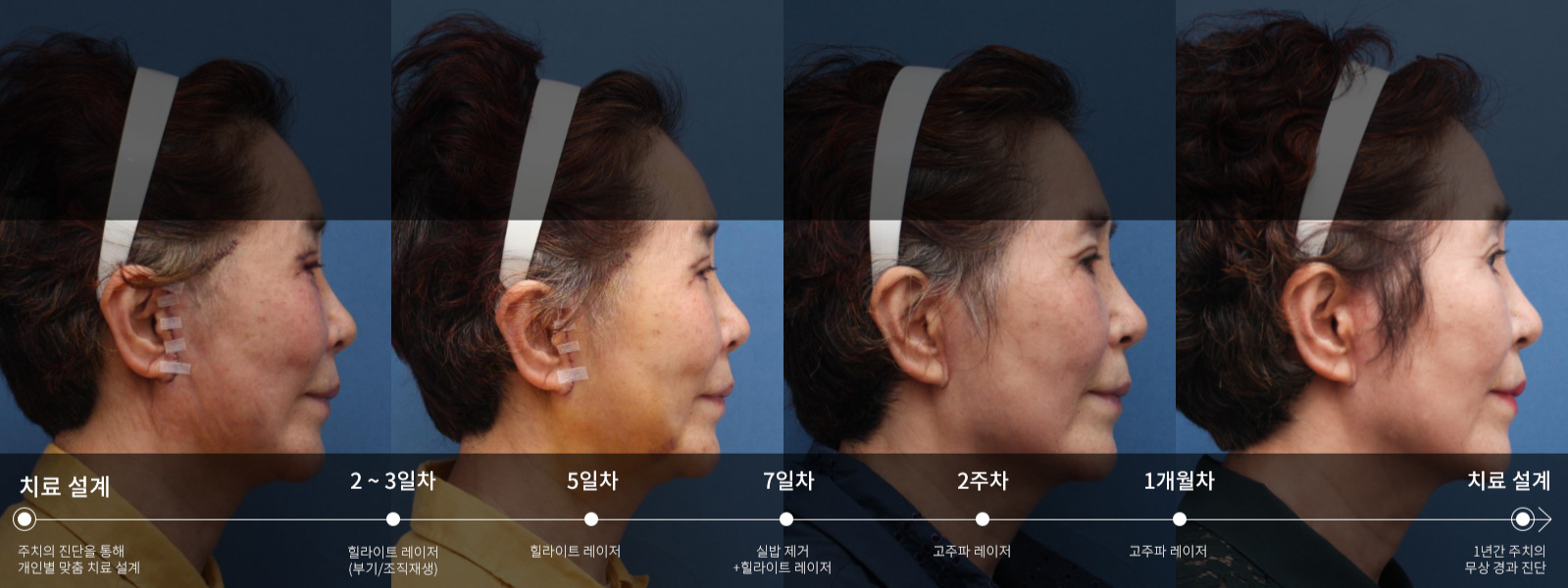
- HEALITE® Laser Treatment After Surgery
-
1. The 590nm wavelength of low-level micropower is initially applied to the epidermal layer of the skin to ensure optimal delivery of healing wavelengths, followed by the 830nm near-infrared wavelength, known for its deep penetration and strong healing capabilities.
2. The 830nm healing photons are emitted from 1,800 light sources, creating a zone where the photons overlap.
3. This zone exhibits healing effects and facilitates rapid skin regeneration and pain relief by ensuring sufficient photon delivery to deeper layers of the skin.
-
 The combination of pre-irradiation with low-level micropower at 590nm, followed by the powerful 830nm near-infrared (near-IR) wavelength that penetrates deep into the skin, is the technique used in HEALITE® phototherapy.
The combination of pre-irradiation with low-level micropower at 590nm, followed by the powerful 830nm near-infrared (near-IR) wavelength that penetrates deep into the skin, is the technique used in HEALITE® phototherapy. -
 The LEDs on the panel are precisely arranged to ensure that the emitted light from each LED overlaps, allowing for interactions through a large number of photons.
The LEDs on the panel are precisely arranged to ensure that the emitted light from each LED overlaps, allowing for interactions through a large number of photons.
- Intensive Scar Care Program
-
HERSHE Plastic Surgery Korea offers an intensive scar care program that is tailored based
on the surgeon's diagnosis, depending on the degree of the postoperative scars.
-
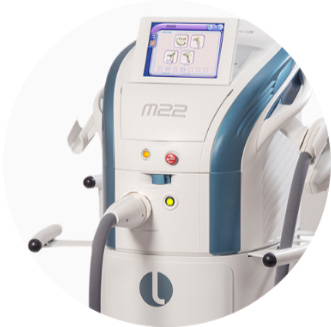 M22® Fractional Laser Treatment
M22® Fractional Laser Treatment -
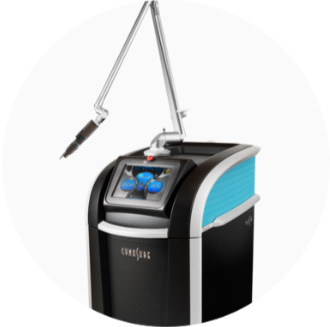 Picosure®
Picosure®

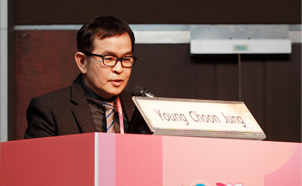
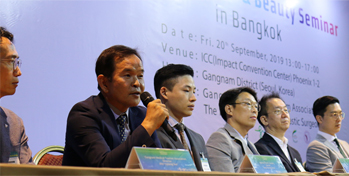
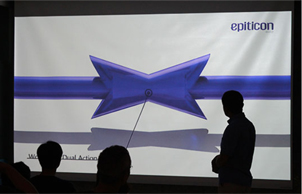
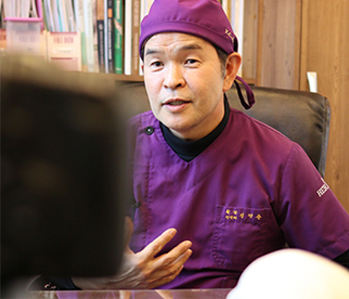
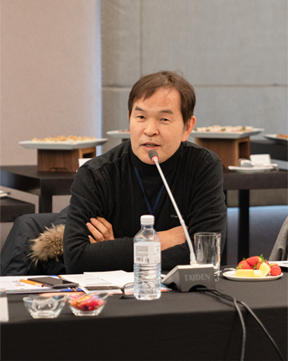
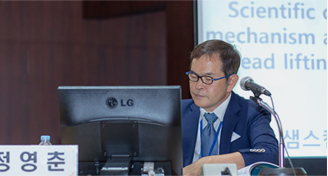
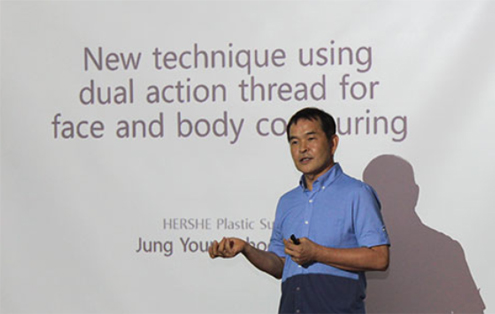

- Professional
- Reason to be confident in anti-aging
-
Since 1992
HERSHE Plastic Surgery Korea is committed to provide natural and satisfactory outcome
through continuous research and study about minimal invasive anti-aging.
HERSHE thoroughly analyzes your personal aging symptoms and lifestyle
to offer the most optimal anti-aging solutions bespoke to your individual needs
based on extensive effort and experiences since 1992.
-
Surgical facelift
by Dr. Jung Young Choon
- Personalized
- Bespoke anti-aging tailored to perfection
-
Aging manifests differently in each person, necessitating a detailed plan that addresses individual aging concerns.
HERSHE Plastic Surgery Korea offers a comprehensive anti-aging solutions from surgical and non-surgical anti-aging solutions, from facelifts to non-surgical lifting procedures suggested by anti-aging specialists.
Based on the extensive clinical experience and continuous research of our anti-aging experts, HERSHE is committed to deliver personalized anti-aging solutions bespoke to each individual's aging stage. -
Lifting Program by
individual aging stage From non-surgical lifting
to full facelift surgery Bespoke anti-aging guidance
by lifting planner
- FAQ
- Frequently Asked Question
Q.Will it make a lot of scars?
A. While the operation will inevitably leave a scar, it is expected to improve and fade over time. With regular application of ointments or laser treatments, you can effectively minimize the appearance of the scar, so there is no need for excessive concern.
Q.Are there any potential side effects or risks associated with this procedure?
A. Potential side effects include hematoma, swelling, bruising, pain, and scarring. However, by diligently adhering to all post-procedural precautions and following your healthcare provider's instructions, these side effects can often be minimized or avoided. It is important to attend follow-up appointments and report any unusual symptoms promptly to ensure optimal healing and address any issues that may arise.
Q.Would it hurt a lot?
A. The level of pain is expected to be minimal due to the administration of sedation anesthesia. However, post-procedural pain may vary among individuals. If you experience a sudden development of fever accompanied by worsening pain within three days after the surgery, it is essential to seek immediate medical attention. Additionally, you may experience temporary discomfort, such as a sensation of facial tightness or numbness. These symptoms are generally transient and should gradually improve over time. It is crucial to follow all post-operative care instructions and attend follow-up appointments to monitor your recovery and address any concerns promptly.
Q.When can I return to my daily life?
A. Recovery times may vary among individuals; however, you can generally resume normal activities once the thread is removed, typically within 7 to 10 days. It is important to avoid vigorous activities, such as running, as these can elevate blood pressure and potentially increase swelling. Additionally, you should exercise caution with heavy lifting, any actions that place strain on your face, and tasks that require keeping your head lowered for extended periods. Sauna use may be permissible around one month post-procedure, depending on your recovery progress. Following all post-operative guidelines and consulting with your healthcare provider will ensure a smooth and effective recovery.
Q.Are there any surgeries or procedures that pair well with MACS Lift?
A. We recommend a surgical approach to optimize anti-aging effects, which typically includes procedures such as self-fat transplantation to address deep marionette wrinkles around the mouth, upper blepharoplasty to rejuvenate the eyelids, removal or relocation of excess fat under the eyes, and facial liposuction to target areas with excessive fat. HERSHE advocates for a balanced approach to surgical intervention, avoiding excessive procedures. We emphasize a thorough consultation process to collaboratively determine the most appropriate surgical plan tailored to your individual needs and goals.

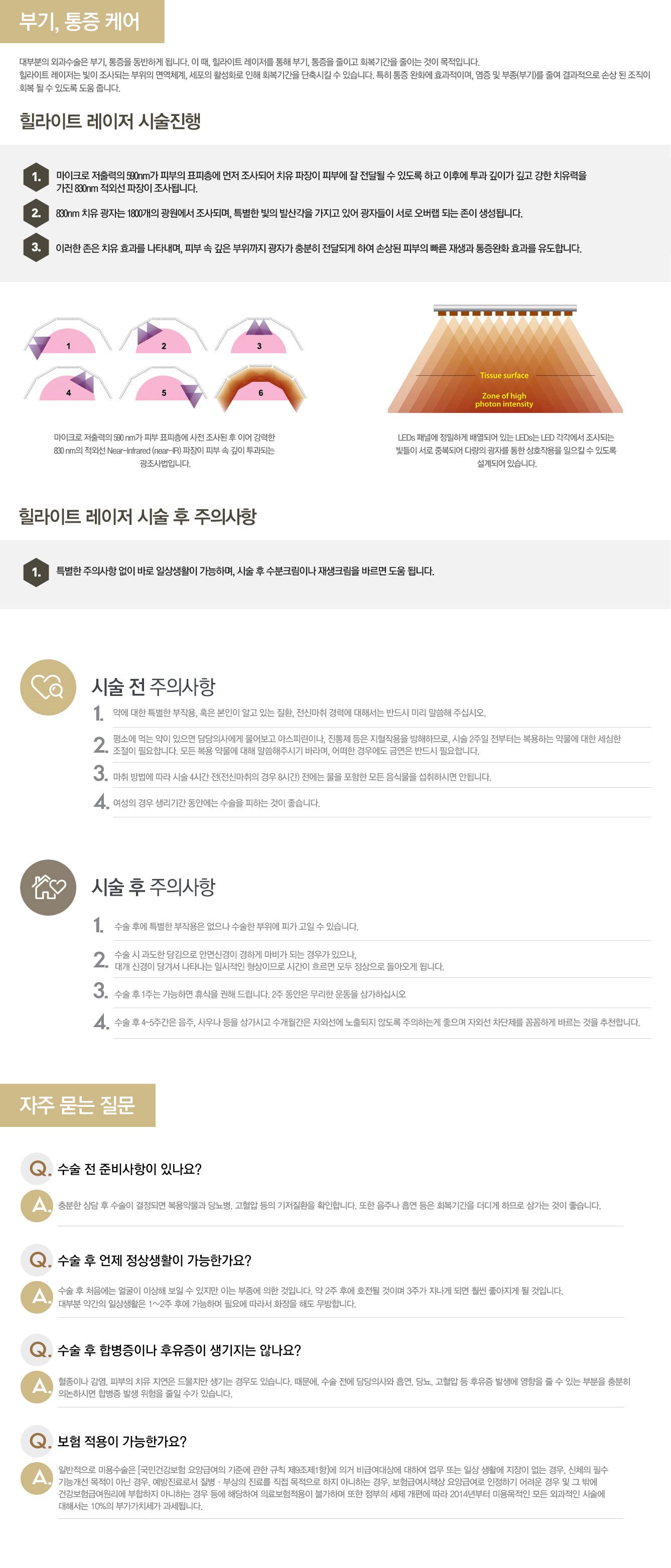
-
HER
SHE - We Prioritize Your Satisfaction!
- Since 1992
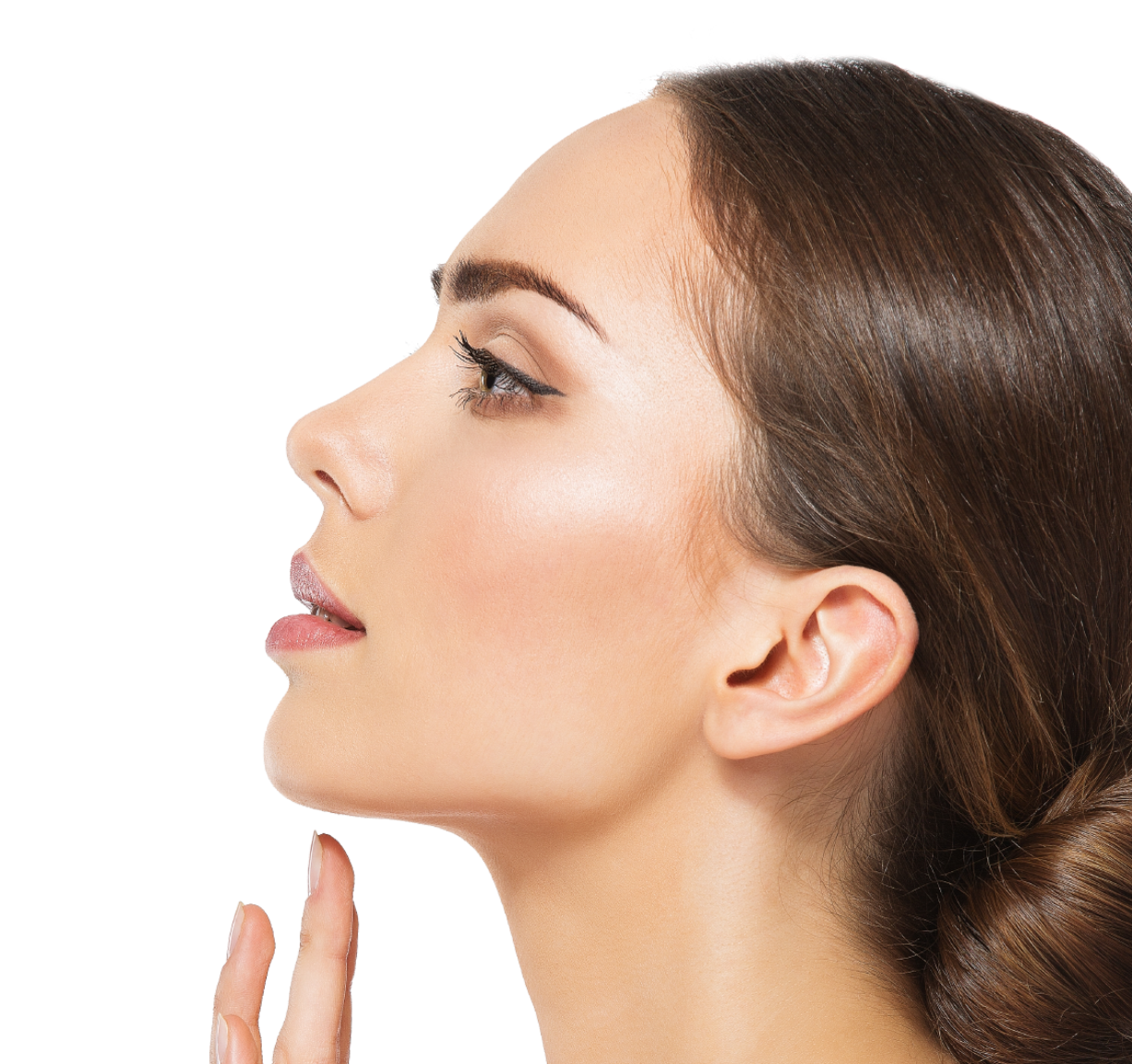


- 허쉬성형외과 전문의 의료진이 콕콕 짚어드립니다.
-

 힙업리프팅으로 애플힙 뒤태 만들수있나요? 힙업성형 Q&A
힙업리프팅으로 애플힙 뒤태 만들수있나요? 힙업성형 Q&A
-

 어깨필러 상담부터 시술과정까지, 직각어깨 REAL 현장
어깨필러 상담부터 시술과정까지, 직각어깨 REAL 현장

 쌍수하고 술 언제부터 마셔도 되나요?
쌍수하고 술 언제부터 마셔도 되나요?

- Before After
- 만족스러운 Signature MACS lift 다음은 당신입니다.



-
1
허쉬는 대리수술이 없습니다.
진료를 담당한 의사가 직접 수술하는 것은 당연합니다. -
2
무리한 수술을 권유하지 않습니다.
디테일한 상담, 명확한 진단으로 가능한 범위 내에서
진료를 하겠습니다. -
3
끊임없는 연구와 노력을 이어갑니다.
기본부터 지키며, 성형을 발전시키는데
이바지하겠습니다. -
4
환자와 공감하고 소통하는 병원
작은 목소리도 가족이나 친구처럼 소홀히 하지 않습니다.





